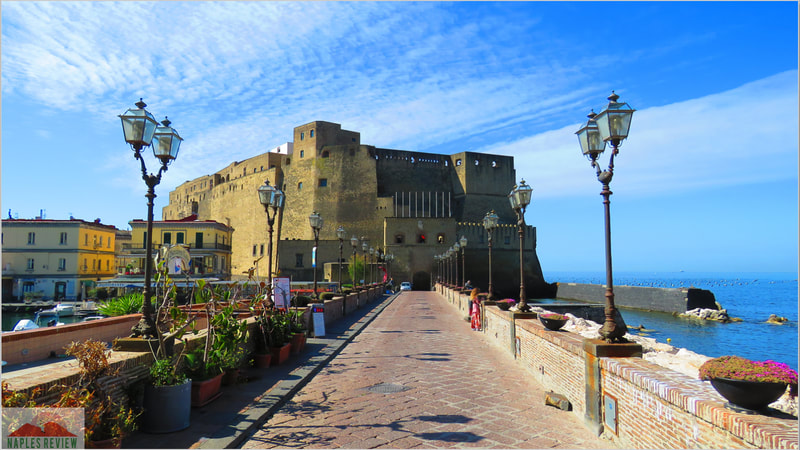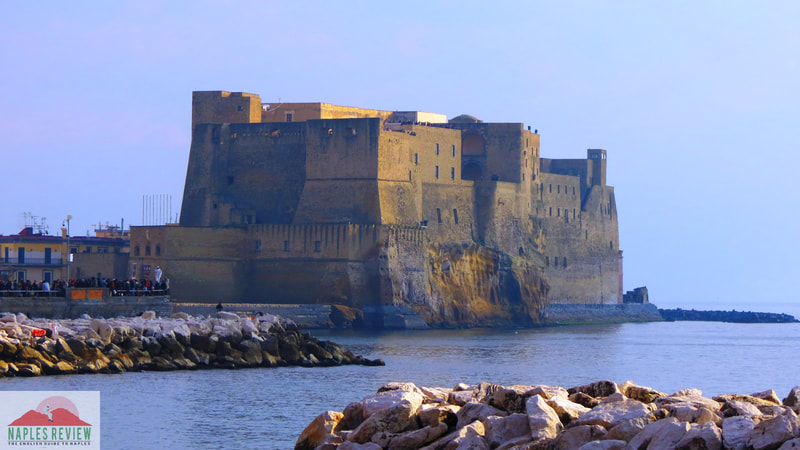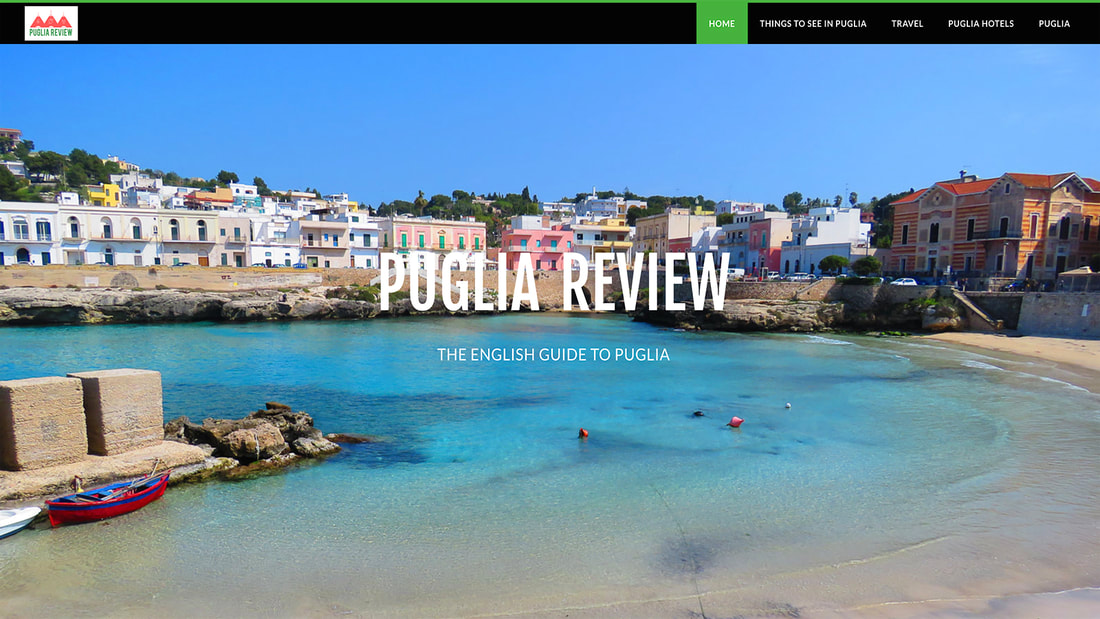Castel dell'Ovo
Latest update: 29 January 2024
|
The oldest castle in Naples, Castel dell’Ovo, was built in the 12th century by the Normans and is on the islet known as Megaride in those days.
The castle is now a tourist attraction and the islet is joined to the mainland by a causeway located in the Santa Lucia area of the modern Naples. An earthquake destroyed part of the castle in 1370 and it was repaired by Queen Giovanna I, or Queen Joanna of Naples who was then imprisoned in Castel dell’Ovo in 1381 after Charles of Durazzo’s forces entered Naples. |
Related links
Alfonso V of Aragon, King of Naples from 1442, made more modifications to the castle and died there in 1458. The Spanish rebuilt the towers as they are today, octagonal in shape, then the Bourbons took over adding more fortifications until the 18th century when Castel dell’Ovo stopped being a seat of the royals and was used as a prison and military base. The castle was then abandoned until restorations took place in 1975.
The ancient history of Castel dell’Ovo is very interesting and according to Greek legend, a Siren called Parthenope failed to attract the attention of Ulysses by her singing and was washed ashore heartbroken at Megaride, hence, the area became known as, Parthenope.
Greek settlers had been in southern Italy since 2,000 BC, however, a larger Greek colony first arrived on the islet of Megaride in the 9th century BC and founded the basis of the city of Naples, or Neapolis in Greek. This area saw several battles between Greeks and Etruscans over trade supremacy and the Greeks were eventually successful.
In 2018, archaeologists found an ancient harbour under the sea near Castel dell’Ovo and it is thought that it could be part of the nearly 3,000 year old Greek settlement of Palaepolis.
Parthenope became known to the ancient Greeks as Palaepolis or “old city.” The “new city” of Neapolis was then built in the 6th century BC and is now known as Napoli in Italian, or Naples in English. Even today, some inhabitants of Naples call themselves Parthenopeans after the Siren who landed near the islet of Megaride.
Legend has it that the Roman writer, Virgil, buried an egg under the foundations of an ancient Roman fortification where Castel dell’Ovo or “egg castle” now stands and that’s how it got its name. If the egg was broken, insisted Virgil, the castle and Naples itself would fall. The threat of Saracen raiders using the Roman fortification led to its destruction in the 9th century but the egg obviously remained intact.
However, a rumour quickly spread that the earthquake of 1370 had damaged the egg and to prevent widespread panic, Queen Giovanna confessed to replacing the egg herself and saved the castle and Naples itself from certain destruction!
In the 19th century, a fishing village developed around Castel dell’Ovo called Borgo Marinari. A marina with nautical clubs, cafes, shops and restaurants followed offering good views of the mainland, the Bay of Naples and Vesuvius.
Today the castle is a tourist attraction and holds conferences and exhibitions. Sunset is particularly good from the highest point known as the Terrace of the Cannons and is sometimes used for photo shoots. Entrance to the castle is free and the surrounding area also has the renowned Neapolitan nightlife.
The ancient history of Castel dell’Ovo is very interesting and according to Greek legend, a Siren called Parthenope failed to attract the attention of Ulysses by her singing and was washed ashore heartbroken at Megaride, hence, the area became known as, Parthenope.
Greek settlers had been in southern Italy since 2,000 BC, however, a larger Greek colony first arrived on the islet of Megaride in the 9th century BC and founded the basis of the city of Naples, or Neapolis in Greek. This area saw several battles between Greeks and Etruscans over trade supremacy and the Greeks were eventually successful.
In 2018, archaeologists found an ancient harbour under the sea near Castel dell’Ovo and it is thought that it could be part of the nearly 3,000 year old Greek settlement of Palaepolis.
Parthenope became known to the ancient Greeks as Palaepolis or “old city.” The “new city” of Neapolis was then built in the 6th century BC and is now known as Napoli in Italian, or Naples in English. Even today, some inhabitants of Naples call themselves Parthenopeans after the Siren who landed near the islet of Megaride.
Legend has it that the Roman writer, Virgil, buried an egg under the foundations of an ancient Roman fortification where Castel dell’Ovo or “egg castle” now stands and that’s how it got its name. If the egg was broken, insisted Virgil, the castle and Naples itself would fall. The threat of Saracen raiders using the Roman fortification led to its destruction in the 9th century but the egg obviously remained intact.
However, a rumour quickly spread that the earthquake of 1370 had damaged the egg and to prevent widespread panic, Queen Giovanna confessed to replacing the egg herself and saved the castle and Naples itself from certain destruction!
In the 19th century, a fishing village developed around Castel dell’Ovo called Borgo Marinari. A marina with nautical clubs, cafes, shops and restaurants followed offering good views of the mainland, the Bay of Naples and Vesuvius.
Today the castle is a tourist attraction and holds conferences and exhibitions. Sunset is particularly good from the highest point known as the Terrace of the Cannons and is sometimes used for photo shoots. Entrance to the castle is free and the surrounding area also has the renowned Neapolitan nightlife.
|
Region: Campania
City: Naples Province: Metropolitan City of Naples Built: 12th century Nearest Metro station: Municipio - Line 1 - 1.7 km - 21 mins' walk |
|
Recommended accommodation: NapoliMia Hotel (1.7 km)
|
Close by: Borgo Marinari, Piazza del Plebiscito, Castel Nuovo
|











